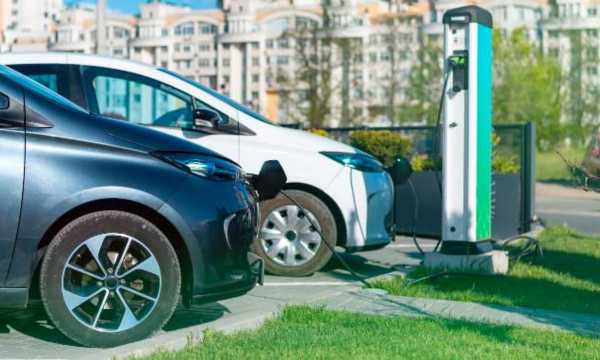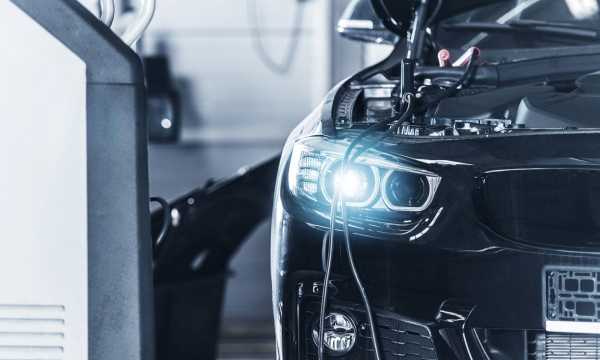Navigating the Electric Car Charging Landscape
The pace of change in electric vehicles has accelerated in recent years, with more and more drivers switching to greener vehicles.
As the number of electric vehicles on the road increases, so does the need to know everything about charging. Navigating all the different charging options, networks and technologies can be difficult for both new and experienced electric vehicle (EV) owners.
This article aims to provide drivers with detailed advice on how to properly charge their electric vehicles.
1. Understand the Different Types of Charging
Before getting into the charging system, it is important to understand the different methods of charging an electric vehicle. There are three main charging levels, each with different speeds and applications:
- Level 1 (home charging): This is the most basic charging level and uses a 120-volt outlet. While charging overnight is convenient, this method charges the slowest and is best suited for plug-in hybrids with smaller batteries.
- Level 2 (Public Charging): Level 2 chargers use 240-volt power, which means they charge faster than Level 1 chargers. You often find these chargers in public places, workplaces, and homes. Level 2 charging is beneficial for both fully electric and plug-in hybrid vehicles because it offers a good mix of speed and convenience.
- Public charging with a DC fast charger: This is the fastest way to charge your car because it sends high-voltage direct current (DC) to the battery. These chargers are usually placed along roads so that drivers can stop quickly during long journeys. DC fast charging is ideal for long journeys as it can fully charge an electric vehicle’s battery in a short time.
2. Understanding Charging Networks
As the electric vehicle market grows, more and more charging networks are emerging that provide charging infrastructure. Electric vehicle users must understand how these networks work so that charging can proceed smoothly. Here are some well-known charging networks:
- Tesla Supercharger Network: The Supercharger Network is a massive cluster of fast-charging stations strategically placed along major highways exclusively for Tesla vehicles. Tesla drivers can travel longer distances because their cars can charge faster and use a private network.
- ChargePoint: ChargePoint performs Level 2 and DC fast charging and is known as a complete charging network. Their networks cover many places, such as public spaces, workplaces, and homes. ChargePoint’s app is easy to use and gives you real-time information about available chargers and their costs.
- Electrify America: The Volkswagen Dieselgate deal spawned Electrify America, whose main goal is to build a robust network of DC fast chargers. Electrify America wants to help a variety of electric vehicles travel long distances by focusing on fast charging.
- EVgo: EVgo is a well-known charging network in the United States that allows you to quickly charge your car using Level 2 power and direct current. EVgo is widely used in cities and along main roads because it is reliable and easily accessible.
3. Navigating Charging Etiquette
As demand for charging stations increases, electric vehicle drivers must comply with charging regulations to ensure fair and efficient use of infrastructure. Here are some rules to follow:
- Be mindful of charging time: Please note that charging takes time and do not leave your car at a charging point once it is fully charged. This allows others to use the charging station immediately.
- Use idle fees wisely: Some charging networks use idle fees to discourage people from leaving their car at a charging station for too long after charging. Take these costs into account and move your car quickly to avoid paying more.
- Plan for long trips: If you travel long distances, plan for charging stations to avoid waiting at charging points. Know where fast chargers are located during your trip and be prepared.
- Check charger compatibility: Check whether the charger is suitable for your car. Not all charging stations are available for all-electric vehicles. Make sure your car can connect to the charging network you want to use and see if any connections are needed.
Conclusion
Finding the best place to charge your electric car is an important part of owning it. Understanding the different types of charging, understanding charging networks, and following good charging practices can help you make the most of the growing electric vehicle infrastructure. As technology continues to develop and more electric vehicles hit the road, it is important that all-electric vehicle owners maintain the knowledge and flexibility to easily charge their cars.
FAQs
1. What does charging point mean?
ChargePoint is a charging network that many people use. It works with Level 2 and DC fast chargers. ChargePoint has chargers located in public places, workplaces, and residential areas. Their easy-to-use app shows you real-time charger availability and prices.
2. Who can use the Tesla Supercharger network? what is it?
Only Tesla vehicles can use the Tesla Supercharger network. This is a system of fast-charging stations strategically placed along major travel routes. This allows Tesla owners to charge their cars faster when driving long distances.
3. Which charging networks can support both Level 2 and DC fast chargers?
Both Level 2 and DC fast chargers are part of the ChargePoint network. The extensive network covers many locations and provides real-time information about charger prices and availability.
4. What does Electrify America do and what are its goals?
Electrify America was built into the charging network as part of the Volkswagen Dieselgate settlement. The main goal is to create a robust network of DC fast chargers focused on fast charging so that electric vehicles can travel long distances.
5. Where is EVgo used intensively? What charging options does it have?
EVgo is a well-known charging network in the United States. It is known for being reliable and easily accessible in cities and along major highways, offering Level 2 and DC fast charging options.
6. How to charge level 2?
Level 2 charging uses a 240-volt power source and is faster than level 1 charging. You can find these chargers in public places, workplaces, and homes. They can be used in fully electric and plug-in hybrid vehicles.
 The Evolution of Electric Cars
The Evolution of Electric Cars
Electric cars, also known as EVs (Electric Vehicles), represent a revolution in automotive technology and environmental conservation. […]
More Car Buying Guides: Navigating Your Way to the Perfect Purchase
Car Buying Guides: Navigating Your Way to the Perfect Purchase
Embark on your journey to finding the ideal vehicle with comprehensive car buying guides tailored to help […]
More Electric Car Maintenance: 6 Effective Tips for Longevity and Performance
Electric Car Maintenance: 6 Effective Tips for Longevity and Performance
Electric cars are currently popular because they are better for the planet than traditional gasoline-powered cars. Electric […]
More